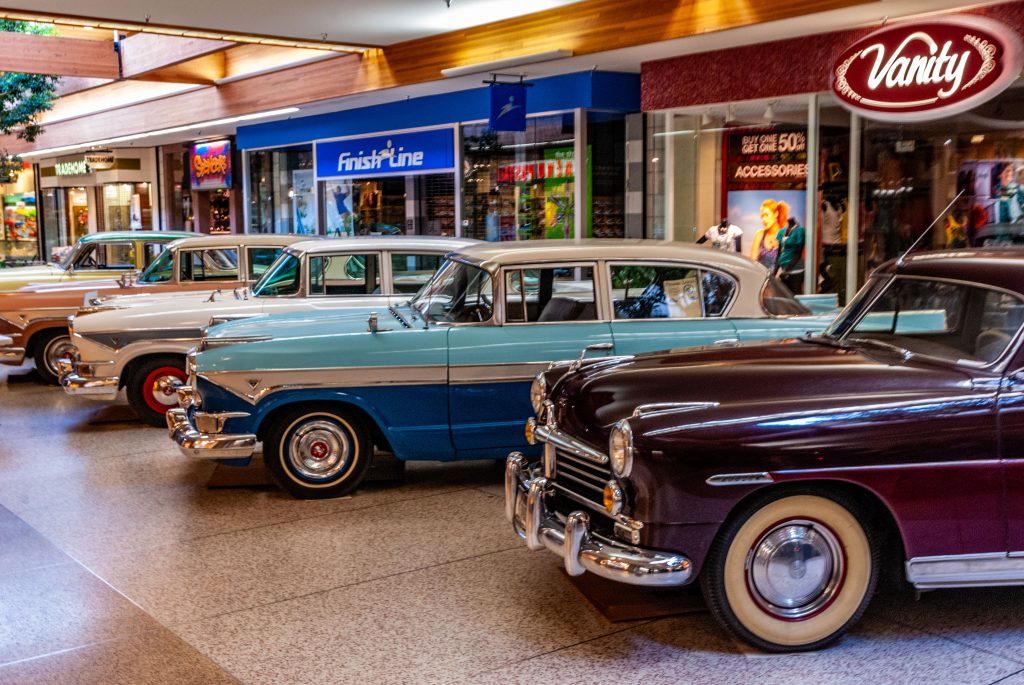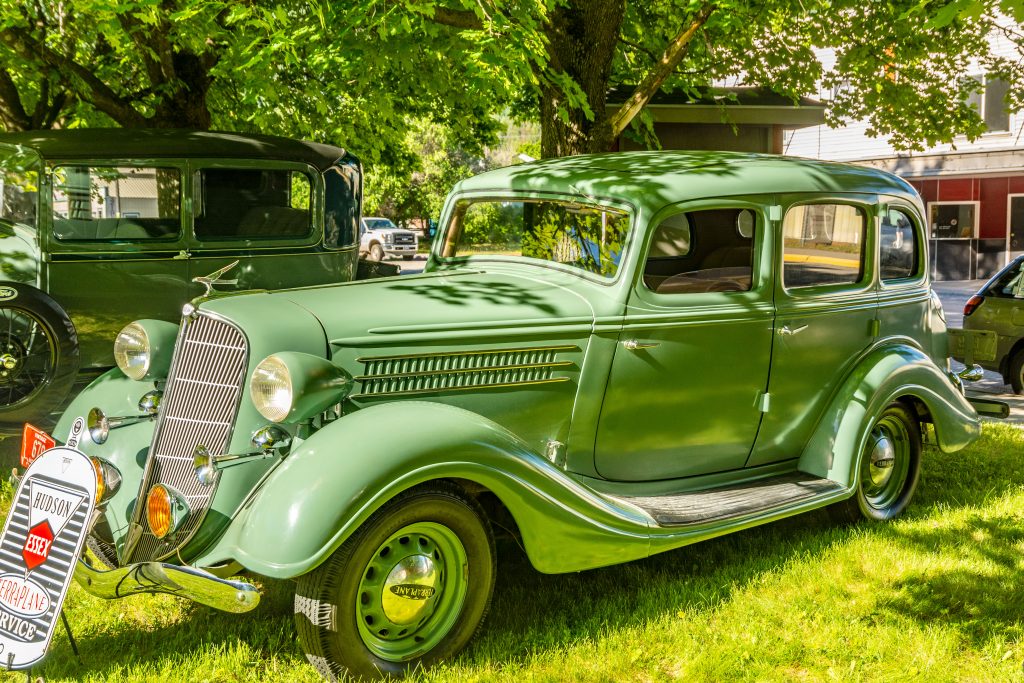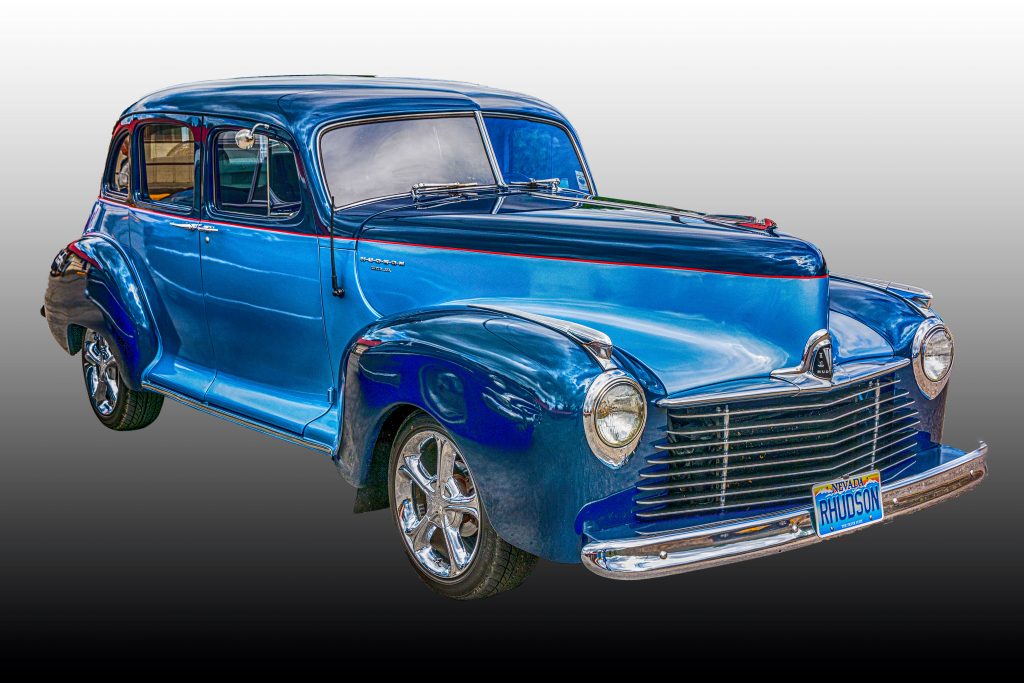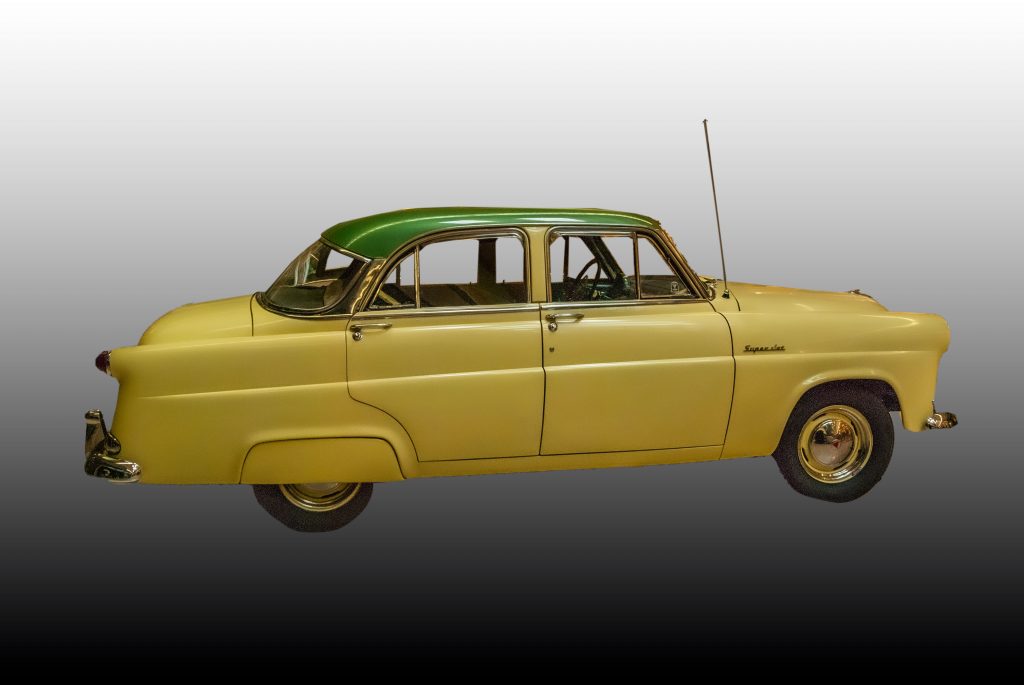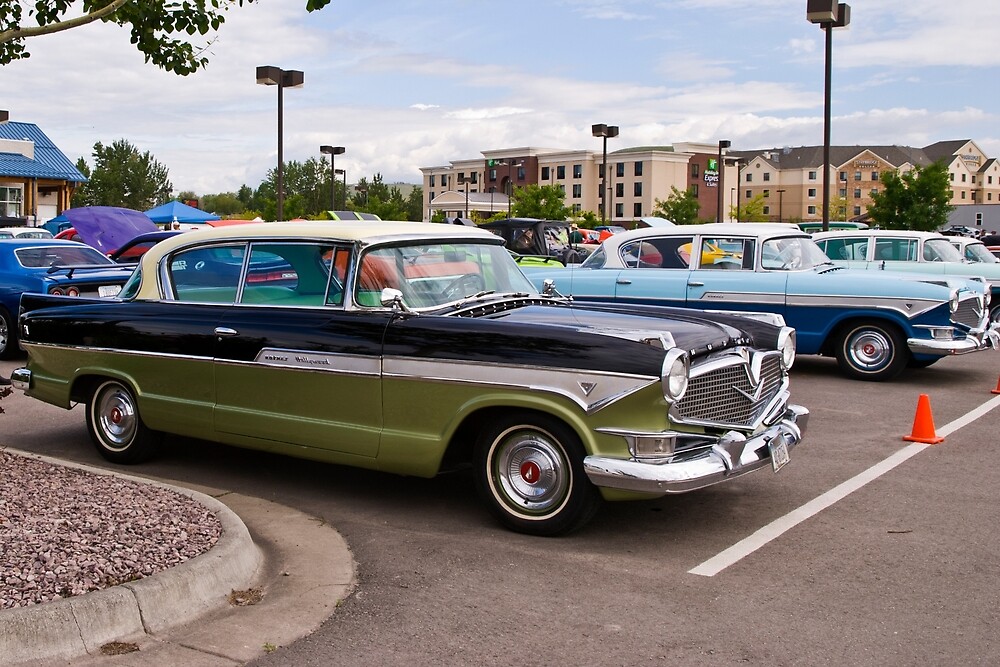The Hudson Motor Car Company
Introducing the Hudson Motor Car Company
Roy D. Chapin, one of America’s automotive pioneers, brought out a new car in 1909. With money furnished by Detroit entrepreneur Joseph Lowthian Hudson, Chapin named his new car for his benefactor. The Hudson Motor Car Company built a wide variety of cars from 1909 to 1954. Cars with the Hudson name appeared through the 1957 model year, but the last car badged Hudson came off the line on June 25th, 1957. And not in Detroit. During the last three years of the Hudson name, the cars were built on the same line as Nash in Kenosha, Wisconsin. (My post about Nash ran on April 9th, 2020. Click on the blue link to read it.)
A Brief Mention of Joseph L. Hudson
Joseph L. Hudson never built cars. His money did, however, allowing Roy Chapin to build a successful company which he named for Hudson. I’m personally drawn to Hudson because we share a birthday. Hudson was born in Newcastle, England on October 17th, 1846. One hundred-three years before I came along. His family emigrated to Canada, and then on to Michigan. Hudson started selling men’s and boys’ clothes in 1881, added women’s wear and household goods and in 1891 incorporated the J.L. Hudson Company. That’s the company that in 1969 merged with the Dayton Company to become Dayton-Hudson. You may know it better as Target. As Hudson himself never built any cars, we’ll move on, saying only that Hudson’s death in 1928 earned a New York Times Obituary which called him “Detroit’s Wealthiest Merchant.” Nowhere in the obit does the Hudson Motor Car Company appear.
Roy D. Chapin, the Real Father of the Hudson Motor Car Company
Unlike J.L. Hudson, Roy D. Chapin was a car guy. After working with Ransom E. Olds in the very early years of the automobile, Chapin headed the consortium who built the Hudson Motor Car Company. With the exception of a seven-month stint as President Hoover’s Secretary of Commerce, Chapin spent his life in the car industry. His son Roy Chapin, Jr., followed in his father’s footsteps, and served as Chairman and CEO of American Motors.
In 1927, Chapin became head of the National Automobile Chamber of Commerce. Along with Packard’s Henry Joy, Chapin lobbied for the construction of the Lincoln Highway, America’s first cross-continent highway. While I could not find any mention of either Chapin or Joy in articles about the Lincoln Highway, I do find it curious that the first section of the highway was known as the Essex-Hudson Highway—not for the cars, but for Essex and Hudson Counties in New Jersey.
Chapin died in Detroit on February 16th, 1936. The Automotive Hall of Fame inducted him into its ranks in 1970. In 2010, his grandson, William R. Chapin, became president of that organization. This is truly a car family.
Essex and Terraplane
Roy Chapin and his partners launched the Hudson Motor Car Company on February 20th, 1909. The first Hudson drove out of the Detroit factory on July 3rd of the same year. The goal was to have a car that would sell for less than $1,000. That’s $28,597 today, and there are a lot of nice cars out there for less than that. A new Camaro or Mustang doesn’t cost that much. But in 1909, cars were still a novelty, and at $900 the Hudson Twenty was priced midway between a Model T Ford and an X3 Oldsmobile. That must have been a good price point, as Hudson sold more than 4,000 of them that first year. 1910 production ran to over 4,500 cars which put Hudson in 17th place nationally.
By 1919, Hudson saw Oldsmobile as the main competition. Chapin felt the need for a lower-priced car. Accordingly, he introduced the Essex. In 1922, Essex built an enclosed car that cost $300 more than its open brother. The closed car was so popular, Hudson was able to close the price gap between the open and closed models. In this way,we could say that the Essex created the Sedan. Combined Essex and Hudson sales put the company in third place by 1925: Ford, General Motors, Hudson. The big three of 1925.
Aviatrix Amelia Earhart christened the Essex Terraplane in 1932. Terraplane sounded more modern than Essex, I guess. By 1934, the Essex name disappeared. So did Terraplane in 1938, as the car now carried the name Hudson 112.
The Hudson Super-Six
Hudson used the Super Six model name off and on from 1916 to 1951. Originally built as a performance car, the Super Six gave the driver 76 horsepower as compared to the normal Hudson six’s 40. The car broke many speed records in a cross-country run, at Long Island, Daytona, and Pike’s Peak. The Joads drove from Oklahoma to California in a Super Six converted to a pickup. (In case you’ve forgotten, the Joads are the fictional family in Steinbeck’s Grapes of Wrath.)
The second generation Super Six debuted in 1927. Completely redesigned, and more powerful, the car came in two-door and four-door models standard. Discriminating buyers could opt for one of five bodies custom built by Biddle and Smart. Essex also appropriated the name, and used it until 1932.
In 1933, the car formerly known as the Essex Pacemaker became, for one year only, the Hudson Super-Six Pacemaker. The name went into retirement until Hudson brought it back in 1940. That year, the Super-Six had the same wheelbase as the Hudson Eight, or five inches longer than the run-of-the-mill Hudson Six. This fourth-generation Super-Six remained available through the 1951 model year. I don’t know the year of the Super-Six in the photo above, but it belongs to this fourth generation.
The Hudson Commodore—Prince of the Hudson Motor Car Company

The Hudson Commodore debuted in 1941. The largest and most luxurious Hudson ever, the Commodore came as a 2-door coupe, a 4-door sedan and a 2-door convertible. Available engines were an inline 6 and an inline 8 with 202 cubic inch and 254 c.i. displacement respectively. The 1946 and ‘47 models were based on the short-run 1942 models, but in 1948 the all-new step-down models came out. Only minor details distinguish the next four years’ designs. The Commodore’s last year was the 1952 model.
Introduced in 1951, the Hudson Hornet had the same step-down design as the Commodore. The Hornet inline six engines were so well designed, the cars were practically unbeatable on the race course circuit. Redesigned for 1954, the car looked more like its competition, but news of Hudson’s financial problems kept the buyers away.
The final large Hudson, the Wasp, joined the line up with the 1952 model year. Built to succeed the Super Custom Six, the Wasp came with your choice of three different inline six engines: 202 cubic inch, 232, and 262. For the first three years of its life, it rode on the Hudson short wheelbase. You could choose from a sedan, a coupe, a hardtop, or a convertible. All were two door models, and the sedan also came as a four door.
The Hudson Super Jet–the Car that Killed the Hudson Motor Car Company.
The Hudson Jet and Super Jet just might have been the right car at the wrong time. Hudsons had been large, heavy cars that looked great and handled even better. But by 1952, they were beginning to look dated. Rather than put money into redoing the large Hudsons, the corporation decided it was time to take on cars like the Willys Aero, the Henry J, and the Nash Rambler. Hudson’s answer was the Jet. There’s absolutely nothing wrong with the Jet. Except… American’s tastes were looking for larger cars. Rather than save the company, the Jet drained precious resources and didn’t refill the coffers. The model has been called “The car that killed Hudson.”
In a show of what might have been, Hudson sent a few Jets to Italy, where the design team at Carrozzeria Touring turned the rather mundane Jets into the sleek, sophisticated Hudson Italia. Looking unlike anything else on the road, the Italia should have done well. Chevrolet had brought out the Corvette. Kaiser had its Darrin. Chrysler had shown the Ghia as a concept, and rumors said that Ford was bringing out a Thunderbird. Hudson had twenty-six Italias built. Twenty-six. Twenty-one of those 26 are known, and at least two more are in Europe. If you want one, be prepared to pay. They’ve gone as high as $400,000.
Hudson Trucks and other Oddities
Hudson built more than just cars. Bill Vance, writing for Autos.ca on May 22nd, 2009, says that the first Hudson trucks were built on the car chassis. These appeared around World War I, and modifications included ambulance and fire department support vehicles. In 1929, the Hudson Motor Car Company introduced the “Dover, built by Hudson Motors.” The Dover was a commercial vehicle built on the Essex chassis. They came in a variety of models, including pickups and panel deliveries. The US Post Office bought a lot of Dovers, and used them clear up into the 1950s. The trucks were that durable.
The Dover name disappeared early in the 1930s, but the trucks continued, now carrying the Essex name. In 1934, as the Essex name dropped out of sight, the company now badged the trucks with the Terraplane name. And in 1937, they were Hudson-Terraplane trucks. For that year only.
Hudson continued to build car-based trucks through the 1947 model year. 1948 brought the step-down design, and that didn’t work for trucks. Unfortunate, because these were truly handsome pickups.
Car-Truck Hybrids
Today’s car afficionados know the El Camino and Ranchero as car-truck hybrids, but such vehicles were popular in the 1930s. Studebaker’s Coupe Express is perhaps the best-known version. Hudson’s version was unique, at least in my experience. Driving down the street, it looked like a regular coupe. But when you needed to load in an 8-foot item, just open the trunk, and pull out the pickup bed. When you’re back home, just push that bed, like a drawer, back into the trunk and close the lid. What a concept. I’d love to see one of these babies.
Speaking of which, I have no photographs of a Hudson truck because I’ve never seen one. But there’s one for sale on eBay that I would just love to have. It’s my new favorite truck, and if you’re thinking of getting me a Christmas present, this one will do nicely. It’s a 1947 model, two-tone tan with a short wooden stock rack. I’m drooling looking at the ad. Please Daddy? Santa? Faithful reader?
Other oddities
I would wager that most people have seen a Nash Metropolitan. Built in England by Austin, Metropolitans were sold in the U.S. from 1953 to 1961. Tiny cars, by American standards, the Metropolitan looks like a toy. What most folk don’t know, is that following the creation of American Motors, the cars were badged with both Nash and Hudson trim. Ted Whipple, who shows his 1954 Hudson Metropolitan around the Reno, Nevada area, says that his is “the rubber chicken of cars.” It makes people smile. The car actually carried Hudson badges through the 1957 model year when all Hudson badges came to an end.
American Motors also rebadged the Nash Rambler as a Hudson Rambler for a couple of years after the 1954 merger. While I have never seen a Hudson truck, or a Hudson Metropolitan, I did do a double take at a Polson Montana car show. That little Rambler had Hudson badges. I’d never seen such a thing before—nor have I since. But it was a pretty little thing.
The End of the Road for the Hudson Name
By 1954, it was obvious that Hudson could not continue on its own. Nash-Kelvinator came to the rescue. The merger of Hudson and Nash resulted in the American Motors Corporation (AMC). AMC closed Hudson’s Detroit plant, and consolidated all production at Nash’s Kenosha, Wisconsin facility. The Hudson name appeared on cars through the 1957 model year, but from 1955 on, Hudsons were basically Nash Ambassadors with special styling. The idea was that Nash would concentrate on their small Rambler and Hudson would be responsible for the larger cars. That meant the death of the Jet. But, have no fear, as noted above,Hudson dealers got Hudson-badged Ramblers and Metropolitans. Well, at least until June 25th, 1957, when the final Hudson rolled off the assembly line. In fairness, AMC retired the Nash name as well.
American Motors would soldier on until 1988. In the end, Chrysler Corporation bought what was left and continues today to produce Jeeps, a line AMC bought from Kaiser in 1970. Roy Chapin’s son, Roy D. Chapin, Jr., even had his turn as President of AMC. As I look around at today’s auto market, I grieve for all we’ve lost over the years. Hudson built some remarkable cars. I don’t see anything similar out there today.
In Closing
Hudsons are still on the road. I almost always see at least one at car shows I attend. If you’d like to get your hands on one, eBay currently shows fifteen for sale, ranging in age from a 1927 Super Six listed at $41,500 to a 1954 Hudson Hornet Special at $19,900. The least expensive is a 1952 Hornet Hollywood Coupe (Restomod) at $7,878. At the other end of the spectrum is a highly customized 1947 Pickup with an asking price of $156,878. Bring-A-Trailer lists fourteen cars that have sold recently, including a 1929 Super Six Town Sedan that sold last year for $25,500. A local 1940 Hudson Eight Touring Sedan sold the end of September for $13,000. Hemmings shows thirty-five cars and trucks for sale. They’re out there.
And should you indulge yourself, you’ll have support. The Hudson-Essex-Terraplane Club claims 2,800 family memberships. The meet four times a year, and produce a magazine, the White Triangle News, six times a year. You can even find the technical manuals available online.
I hope you’ve enjoyed this blast from the past. I know I’ve learned a lot about a car that has always fascinated me. And seriously, if you want to buy me a present, that 1947 Pickup is just screaming my name.
TTFN
![]()

